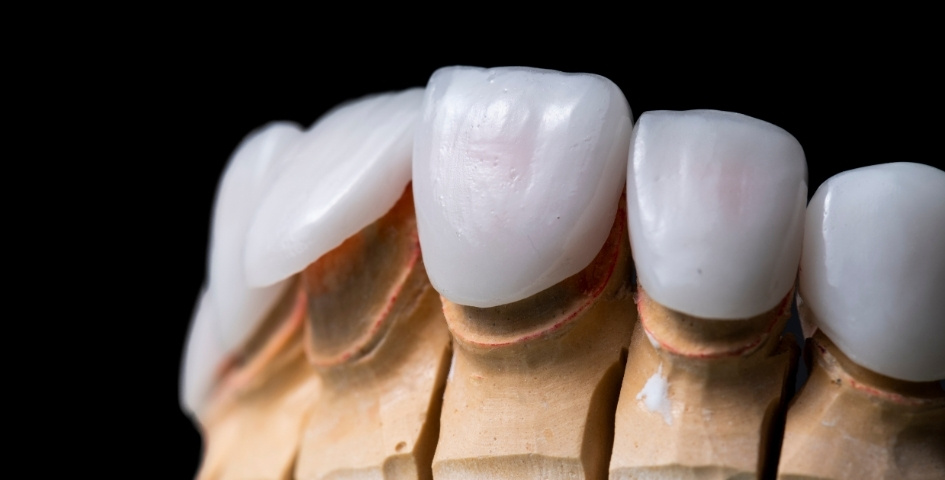
The right shade for your veneers is essential in achieving a natural, radiant smile. Veneers are thin, custom-made shells that cover the front surface of teeth. The shade of your veneers significantly affects your smile’s overall look and feel, making it essential to select a color that complements your natural features. A perfect match ensures a more aesthetic result and contributes to your confidence.
Picking the right shade enhances the veneer’s function, blends seamlessly with your natural teeth, and helps you achieve your desired smile. This guide will walk you through the process of choosing the ideal shade for your veneers. You’ll understand how to select the best shade based on skin tone, personal style, and lifestyle.
Understanding Veneer Shades
Veneer shades are the color variations that match the appearance of your teeth. They differ from natural teeth shades in that veneers are designed to provide a more uniform, brighter appearance.
The veneer materials, like porcelain and composite resin, affect the shades’ appearance. Porcelain veneers are often more natural due to their transparency, while composite resin is less translucent and can seem slightly more opaque.
The shade range for veneers usually includes categories such as A1, B1, or C1. These numbers represent different color tones, with A shades more natural, B shades lighter, and C shades darker. To determine the right match, professionals consider the value (lightness/darkness), hue (color tone), and chroma (color intensity) of your smile to create the ideal veneer shade.
Factors to Consider When Choosing a Shade
Skin Tone
Your skin tone plays a crucial role in selecting the best veneer shade. Individuals with warm undertones, such as yellow or golden hues in their skin, often suit veneers in the A or B range, which are warmer shades.
Cool undertones, with pink or blue hues, typically pair better with lighter, cooler shades. Choosing a shade that complements your skin tone enhances the natural beauty of your smile.
Natural Teeth Color
Your current tooth color affects your shade choice. If you want your veneers to blend seamlessly with your natural teeth, select a shade that matches your teeth.
However, if you’re looking to brighten your smile, choosing a lighter shade is a great option. Veneers offer the opportunity to enhance or correct the appearance of teeth that are discolored or worn down.
Personal Style and Preferences
Your style will also dictate your choice. Some people prefer a white, sparkling smile, while others lean towards a more subtle, natural look. If you’re aiming for a brighter smile, opt for shades that are a few tones lighter than your natural teeth.
Conversely, if you prefer a less noticeable transformation, choose a shade closer to your existing tooth color.
Age and Lifestyle Considerations
Age and lifestyle can impact your veneer shade decision. Younger individuals might desire a brighter smile, while older patients prefer more natural, subdued tones that look less artificial.
Lifestyle factors also play a role. If you smoke, drink coffee, or drink red wine, your veneers may stain over time, so you might opt for a more stain-resistant shade or a slightly darker shade to prevent visible staining.
Lighting and Environment
Lighting significantly affects how the veneer shade appears in real life. Under bright lighting, lighter shades might appear whiter, while darker shades may look more subdued.
It’s essential to consider your environment’s typical lighting conditions to choose a shade that will maintain its aesthetic in different settings.
Consulting with Your Dentist: The Role of Professional Advice
An adept cosmetic dentist will be key in choosing the right shade for your veneers. They will take into account factors such as the natural color of your teeth, the shape of your face, and your smile goals to recommend the best veneer shade. Your dentist will also use various tools like a shade guide to compare different colors, helping visualize how different shades look.
Modern digital technology can further refine the selection process, allowing the dentist to show you a preview of how your smile will look with different shade choices. Working with your dentist ensures that the final result complements your facial features and meets your expectations for both appearance and function.
The Selection Process of Right Shade for Your Veneers
Step 1: Shade Consultation
During the consultation, you’ll discuss your shade preferences with your dentist. They’ll ask questions about your desired smile appearance, and you’ll review different shade options using a shade guide. This step helps narrow down your choices based on your preferences and facial features.
Step 2: Trial and Error
Many dental practices offer a trial period with temporary veneers to help you choose the best shade. This gives you the opportunity to wear temporary veneers and assess how the color looks in different lighting and environments. It’s an important step in ensuring that you’re happy with your selection.
Step 3: Final Selection
Once you’re satisfied with the temporary veneers, the dentist will create your permanent veneers in the chosen shade. They will ensure that the final result looks natural and complements your face shape and features. The dentist will also make any final adjustments to ensure a perfect fit and finish.
Maintaining the Perfect Shade Over Time
Proper Care and Maintenance
Good oral hygiene is important to keep veneers looking their best. Regular brushing, flossing, and routine dental cleanings will help maintain the brightness of your veneers. Avoiding foods and beverages that stain teeth, such as coffee and wine, can also help preserve the shade of your veneers.
Touch-ups and Replacements
Over time, veneers may lose their color or wear down. If this happens, you may need touch-ups or replacements to restore their appearance. The need for touch-ups will depend on your lifestyle and the materials used for your veneers.
The Impact of Aging on Veneers
Veneers, like natural teeth, may naturally change color as they age. Aging can cause slight discoloration, but proper care can minimize this effect. If your veneers start to yellow or dull over time, consider consulting your dentist about options for touch-ups or replacement.
Mistakes to Avoid When Choosing the Right Shade for Veneers
One common mistake is selecting a shade that is too bright or dark compared to natural teeth, which can look unnatural.
Another mistake is overlooking the long-term maintenance of veneers. Veneers can stain or discolor, so choosing a shade that fits your lifestyle is important.
Additionally, some people forget to consider their skin tone and lifestyle habits when choosing, which can lead to unsatisfactory results.
Selecting the perfect shade for your veneers is essential to achieving a natural and aesthetically pleasing smile. With careful consideration of skin tone, personal preferences, and lifestyle, you can choose a shade that enhances your natural beauty.
Consult with our dentists to ensure the perfect match for your veneers. Our expertise and advanced tools will guide you through the selection process and help you achieve a smile you’ll love.


